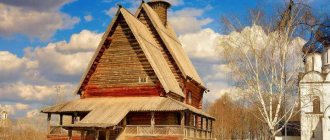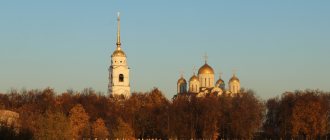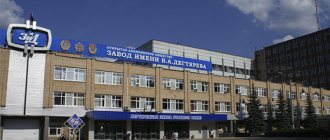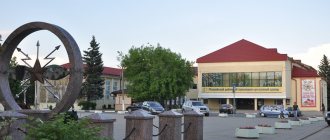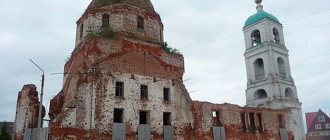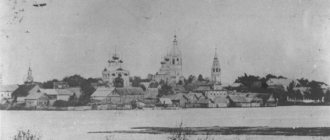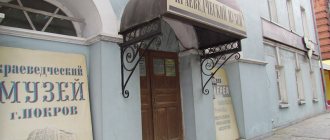Suzdal is one of the most beautiful cities of the Golden Ring . I've been here more than once before. But those were short day trips. And at the end of May last year I came here for three whole days! It seemed to me that this would be enough time to explore the entire city several times. However, it turned out that this time was not enough to see all the sights!
♦ On topic: Excursions to the cities of the Golden Ring of Russia
Suzdal Kremlin and Ilyinskaya Church from the Ilyinsky Meadow
Suzdal: a brief description of the city
Suzdal is located in the Vladimir region, 38 km from the regional center and 224 km along the highway from Moscow. More than 10 thousand people live here. Area - 15 km2.
The city is small, environmentally friendly, since there are no large industrial enterprises in it. The only exception is the meadery, which produces several types of mead. It is famous for its special manufacturing technology using natural products. Rarely does anyone leave without this traditional souvenir.
Its economy is based on tourism, so the hotel business is thriving. Attention is paid to the development of the food industry network: restaurants, cafes, and the provision of banking services. There are sewing workshops.
The city of Suzdal from a bird's eye view
There are no multi-storey buildings in Suzdal. There is a ban by local authorities on the construction of buildings higher than 2 floors. Most of the houses are built of wood or decorated with wood. Every effort is being made to ensure that the city retains its medieval style. His calling card is the white stone walls of monasteries combined with natural wood.
Directors have repeatedly chosen the city to film famous films: “The Youth of Peter”, “The Marriage of Balzaminov”, “The Ballad of a Soldier”, “Dead Souls”, “Blizzard”, “Tsar”, “Andrei Rublev”.
Suzdal is the site of the annual Open Russian Animated Film Festival.
Historical background, names of the city of Suzdal
Historians have been trying to uncover the mystery of the city’s name for decades. There is no consensus yet.
There is a legend about its creation, told by the chronicler Fedorov. It tells the story of three brothers from the tribe of Japheth, who were born after the end of the flood. Two of them laid the foundation for cities in the Russian lands on the shores of the Varangian Sea, and the third explored new lands of forests and swamps. Suzdal grew up in those places.
The Laurentian Chronicle of 1024 contains lines mentioning the settlement of Suzhdal, which meant “the founder destined the city to be here.” The settlement consisted of artisans and farmers. According to one of the most substantiated versions, the word Suzhdal comes from “sezdati”, which in Ancient Rus' meant “to create from clay”. Suzdal is a city made of clay.
Another group of scientists adheres to the theory that this word is of Finno-Ugric origin, like most of the geographical names of this area. This version is not scientifically substantiated enough, but it is what is mentioned in local history publications.
There are a few more assumptions:
- Some historians insist that it is based on the Greek word “Suz dulus” (“thy servant”).
- Another version is that the name of the city comes from the word “sushidalo” (“drained place”).
Suzdal from "creation"
The publication was prepared by the brethren of the Sretensky Monastery based on material collected during a trip to Suzdal in February 2005.
Suzdal is a city of monasteries. From a bird's eye view you can see that a third of the old city is occupied by churches and monasteries. Throughout history, there have been fifteen monasteries in Suzdal, not counting parish churches. Not all of them have survived. From the beginning of the 13th century, Suzdal was the residence of bishops. Monasteries were founded under each bishop, and sometimes even two. They survived for centuries, but some were destroyed by the Tatars in the 13th century. For example, in 1238 the Vvedensky nunnery was destroyed. And some were destroyed by the Poles during the troubled times from 1608 to 1610. Suzdal was ravaged several times by Polish troops, Lithuanians and even Cossack freemen. You can go along Vasilyevskaya Street to Kideksha. The street is named after the monastery. The monastery, whose temple is consecrated in honor of St. Basil the Great, was founded in the 13th century. There is no specific date of foundation, but the foundation of the monastery is associated with the name of the appanage prince Vasily of Rostov. Perhaps the prince founded this monastery on the outskirts of Suzdal. But there are unconfirmed versions that in the 10th century, Vladimir the Baptist, coming here, founded a monastery. More reliable versions indicate the existence of the monastery since the 13th century. Archaeologists say that the cultural layer has been preserved there since the 13th century. The monastery itself was active until the time of Catherine II. But after the secularization of church lands, and almost all the richest lands in the area belonged to monasteries and the bishop's house, many monasteries lost their large holdings. Therefore, some monasteries were abolished and turned into parish churches. Vasilievsky Monastery was assigned to the Spaso-Evfimiev Monastery. Thus, two monasteries were combined. The temple in the Vasilyevsky Monastery was built in the 17th century. At the end of the 17th century, old building technologies, mosquito covers, and ancient structures were no longer used. And they erected simpler closed vaults and flat roofs. A light drum has been preserved above St. Basil's Cathedral. This temple is special for Suzdal - it has two pillars. Which slightly changes the old tradition of building four-pillar or six-pillar temples. The bell tower was built later, in the 18th century. Now the monastery is operational. The brothers live in small houses. The Sretenskaya refectory church was also transferred to the monastery, but not the entire territory of the monastery was transferred to the brethren. There is also a utility house there, this is a legacy of old times. In Suzdal, all active monasteries - Vasilyevsky, Pokrovsky, Rizopolozhensky - occupy only half of the monastery territory. There is a hotel in the Pokrovsky Monastery. In the Deposition of Robe Monastery there is also a hotel complex, a sports complex, and there is even a small communal town. But the process of returning church property to the monastery's possessions is gradually underway. Of course, compared to the former number, we have few monasteries left, only five. But two of them, Spaso-Evfimiev and Pokrovsky, are among the most famous and richest monasteries in Russia. The entire district, all the fields through which one passes to Kideksha, belonged either to the Spaso-Evfimiev or the Intercession Monastery. Part of the land also belonged to the bishop's house; it was third here in wealth and wealth. More than five and a half thousand serf households along this road belonged to the Suzdal bishops. We will now drive past their possessions to the ancient village of Kideksha. Kideksha is an amazing place. It has been preserved as a settlement since the second millennium BC, and sites of ancient people have been discovered there. Then Finno-Ugric settlements appeared there. Perhaps the very name Kidekshi, like the name Suzdal, is associated with the Finno-Ugrians. In the Finnish dialect, in the Merya dialect, Kideksha is a rocky branch, a rocky tributary. That is, this is the second pre-Slavic name for Kamenka. Kamenka is the main river of Suzdal, small and shallow, but always full of water thanks to a special cunning system of filling it. It has always been used as a trade route. And the larger river, the Nerl, flows a little further, we will, of course, go to its shore; it connected Suzdal by water with the Rostov lands, with Vladimir, and Moscow. These rivers were quite busy arteries; trade caravans traveled along them not only in summer, but also in winter. However, in addition to trade caravans, enemy hordes also moved along these rivers. From the end of the 11th century, at the beginning of the 12th century, the Volga Bulgars attacked the vicinity of Suzdal several times. And in general, the fortress, the residence of Prince Yuri Dolgoruky in the 12th century, served as an outpost on the approaches to Suzdal. From here the townspeople were warned about the approach of the enemy, so that it was possible to provide for defense. Several times the Volga Bulgars, who rushed here, were defeated by the Suzdal armies. Nothing remains of the Kidekshi fortress, and practically nothing of the ramparts themselves. They were located on the territory of modern vegetable gardens and were plowed up. But the white stone church of St. Boris and Gleb, and moreover, if more thorough research had been carried out on this place in the 19th century, then perhaps there would have been more discoveries. After all, it is mentioned that in the 19th century, next to the church of St. Boris and Gleb, the remains of marble were discovered. Marble is not in the modern sense - white stones were discovered. These remains of white stone buildings belonged to the palace of Prince Yuri Dolgoruky. The prince founded his residence here for a reason. The place was very convenient for defense. Here the confluence of rivers - Kamenka flows into the Nerl. And in this place, earlier, during the time of Monomakh, another stone building was erected. The remains of plinth structures were discovered by archaeologists. Perhaps Monomakh also built a temple on this site at the beginning of the 12th century. The existing temple was built on a legendary site; it refers to the personalities of Boris of Rostov and Gleb, his brother. In honor of these martyrs, the first Russian saints, the throne of the temple was consecrated. According to legend, they met here shortly before their death. So this place was consecrated by truly historical figures. The white stone temple in Kideksha is considered one of the most ancient white stone buildings here in the northeast. This temple building can be considered the beginning of white stone architecture in the northeast. And it was from the time of Yuri Dolgoruky that white stone construction began, but, taking advantage of his friendship with the Volyn princes, he initially invited craftsmen from Volyn. From the west they came here and taught local craftsmen how to build with white stone. Before this, since the time of Monomakh, wood, of course, and brick were used. Here it is, a white stone temple, and we will visit it now; besides it, there is also a large complex. Here, after the time of Yuri Dolgoruky, from the end of the 12th century, from the beginning of the 13th century, the Boris and Gleb Monastery arose. It existed as a functioning monastery until the 18th century. It was ruined several times, and the temple of Boris and Gleb was damaged during Batu's invasion. His hordes marched from the south and south-east to Suzdal and crossed the Nerl, and, of course, destroyed all the villages on their way, including Kideksha. All wooden buildings burned down, the temple was also on fire. Its eastern side collapsed after a fire; powerful white stone vaults and a powerful white stone dome crushed part of the walls. They were, of course, restored, slightly changing the shape of the temple. From an almost regular cube it turned into a slightly truncated, reduced rectangle. Well, the top was restored later and even rebuilt from brick in the 18th century. The remains of the mosquito coverings have been preserved; the semicircle is clearly visible. And the remains of windows have been preserved, ancient slit-like windows made like slaughterhouses. And here is a large window, hewn in the 18th century. At the beginning of the 18th century, Suzdal bishops donated money to this monastery for its strengthening and improvement. The episcopal see existed here until the middle of the 18th century; the last bishops at the end of the 18th century lived in both Suzdal and Vladimir. And since 1799, the residence of the bishops was transferred entirely to Vladimir, and Suzdal retained its old monastic traditions, the significance of the former monastic and religious center. But gradually everything falls into decay, and mostly at the expense of merchants and local residents, temples are restored and renovated. The temple in honor of the Great Martyr Stephen, deacon of Jerusalem, was built at the end of the 18th century. The temple is active. The rector, Father Andrey, lives here, his house is nearby. The bell tower was built approximately in the 70s of the 18th century. A few years after the soil subsided, it began to collapse. Of course, a unique structure for us, the leaning bell tower, has been preserved since the end of the 18th century. Restorers in the 20th century, the year of the creation of the unified Vladimir-Suzdal Museum-Reserve, strengthened part of the foundation so that the bell tower would not completely collapse. But its roll is gradually increasing, millimeter by millimeter. The President allocated funds, more than a million rubles, for the restoration of the temple and the entire complex as a unique monument. In the 8th century, the monastery was abolished, and the temple became a rural one. Until 1923, all Suzdal churches, monasteries, and churches in surrounding villages were operational. After the signing of the decree on the nationalization of church property, some of the churches are transferred to the jurisdiction of the city authorities. In Suzdal, for example, twenty-two temple buildings of the 18th and 19th centuries were destroyed; they tried to dismantle the temples of this particular period for bricks. The remains of this building were found on the northwestern side. One window in the temple was blocked, and the exits to the passages to the prince’s palace were blocked. Galleries and choirs have been preserved here. The choirs had exits to these passages, which connected the temple with the princely palace. A temple with three entrances, or three portals, a cross-domed temple, was preserved until the 18th century. After the roof was rebuilt, making it brick, a refectory and a small chapel were erected on the western side of the temple. We used old material, white stone and brick. And then they painted it in a new style. The days of creation are depicted here. The church was a summer church and closed in winter; the service was held in the neighboring winter church. There has never been heating and, presumably, there never will be. The painting becomes covered with frost, which, of course, spoils it. At the entrance to the temple itself, as expected, we are greeted by Archangel Gabriel and Archangel Michael. These paintings are also from the 18th century. Inside the temple, frescoes from the 12th century have been preserved, and the frescoes are now being restored and renewed. Parts of an old letter are revealed, and you recognize more and more the ancient appearance of the temple. Of course, the temple was renovated in the 18th century, and these walls looked completely different, but some of the old writing was preserved here, and some was cleaned off. Test clearings were carried out and it was discovered that the 12th century letter was not preserved everywhere. Images of Christ, the Mother of God and John the Baptist in a 12th-century painting were preserved over the grave of Yuri Dolgoruky’s son Boris Georgievich, who was buried here in the 12th century. But already in the 19th century, the sarcophagus, previously untouched by anyone, began to be examined and studied. One of the local historians, moving the lid of the coffin board, saw the preserved remains of a man dressed in expensive clothes embroidered with gold. A golden eagle was embroidered on his chest, reminiscent of the ancient Byzantine tradition. The eagle is a symbol of divine will. In imitation of the Byzantine basileus, the princes decorated their clothes with eagles. Such images can also be found on the Golden Gate in the treasury in Suzdal. There were images of not only a single-headed eagle, but also a double-headed one, as a symbol of power. It is unknown where this robe went. Boris himself was reburied, hidden under the slabs. Here you can only see the tomb and gravestone.
Opposite, near the northern wall, was the burial of his wife and mother, Mary and Euphrosyne, who were buried under the same arcosol. A painting from the 12th century has been preserved above the burial; above it is depicted St. Maria, patroness of the wife of Prince Boris. And another woman is depicted, in very expensive, rich, apparently Byzantine clothes. There is an assumption that this is an image of the mother of Boris Georgievich, the wife of Prince Yuri Dolgoruky, Princess Euphrosyne, who died in 1161.
On the southern wall there are several Gospel images preserved, as well as an image of two horsemen.
There is an assumption that these are Saints Flor and Laurus. And since they appear fair-haired, with light eyes, like the local residents, there is a hypothesis according to which this is a symbolic image of Saints Boris and Gleb. After all, the place itself was identified with the place of arrival of these two princes, and the paintings were apparently dedicated to them. The temple itself partially went underground, and the cultural layer of the 12th century is located quite low .
But the structure of the temple, its shape, has hardly changed since that time. Only the altar part, behind the pillars, was slightly lowered, since the top was destroyed during a fire and it was rebuilt. The altar part itself is small; the altar barrier was apparently located somewhere here, but then during reconstruction it was moved a little to the side. And accordingly, the stone pulpit, authentic from that time, the 12th century, was brought forward. Even the screeds that connected the walls were partially preserved, but they were replaced during the restoration with forged screeds so that the walls did not move apart at all. During the restoration, the pillars were also strengthened, clearing was carried out, and the floor was rebuilt in some places. Above the tomb of Prince Boris, on the western wall, we can see dim frescoes of the 12th century, which are very faintly visible. Paradise is depicted here: fragments of the Garden of Eden in the form of ornamental vegetation, birds of paradise. The rest of the paintings, the entire rich interior of the temple - all this has sunk into oblivion. And the temple itself stands; regular services, of course, do not take place here, but groups of pilgrims often come here. Only on the day of memory of St. Boris and Gleb's service is taking place here. The temple is now open as a museum.
The building material from which the cathedral is built is not of local origin. This is a white stone. It was delivered here, apparently, by water, along a river system, and it was a very expensive material. It is not known for certain where it was brought from. There are suggestions that it was delivered from the Moscow region, from the large Myachino quarry. There are also finds of white stone deposits near Gus Khrustalny in the Vladimir region. But it is believed that there are later quarries there, and the more ancient ones were still in the Moscow region. The river system made it possible to transport stone, but it was very expensive. At cost, this event could ruin the local princes. Perhaps a closer deposit of stone was found, not rich enough, apparently worked out so much that they still cannot find it. After all, the temple in Kideksha, the temples in Suzdal, in Vladimir, the buildings of the Spaso-Evfimiev Monastery, not only the temple, but also the civil, palace, which were erected on this land - all required large deposits and a huge amount of white stone.
When decorating the facades of the temple, the European system was used. The Church at that time did not order decorations in the form of images of animals, people, and birds to be placed on the walls of the temple. It can be seen that the external decor of the temple is very modest. This tradition was maintained mainly until the middle of the 12th century. And already at the time of the construction of the Church of the Intercession on the Nerl, the Demetrievsky Cathedral in Vladimir, a new era of construction of palace and cathedral churches began, where the use of decorative relief was allowed. During the time of Yuri Dolgoruky, only an arcature belt was used as decoration in the construction of temples. This belt corresponded to the line of the choirs, where exactly the prince went.
Having climbed to the observation deck overlooking the Nerl River, we can see how well the entire surrounding area is visible. The bottom of the fortress led directly to the river. You can see the remains of natural “mounds”; the ramparts of the fortress were on the other side, where everything is now plowed into vegetable gardens. Apparently, the shaft was even higher and ran along the steep bank. The Nerl merges with Kamenka in the place where the village of Novoselka now stands. The name of the village speaks for itself - a new village. Archaeologists conducted excavations at this site and found that settlers appeared here already in the 8th-9th centuries. Basically, these were immigrants from western lands, including from Smolensk. The powerful Krivichi tribe settled down the Volga and came here to the rivers of the Volga basin. Later, one of the most important trade routes began to pass through Suzdal, which became known as the “route from the Varangians to the Greeks.” That is why Suzdal in the 12th century, together with Kidekshi, became one of the most famous shopping centers not only in Rus', but also in Europe. Suzdal at that time was considered a metropolis of its kind, its population numbered about ten thousand people. The territory of the Kremlin, the settlement, the immediate surroundings - everything was inhabited. The population density is high due to the fertility of the land. The black soil layer reaches 70 centimeters in some places. The area of this rich, fertile land is about 1000 square kilometers. The former possessions of the princes were gradually transferred to the monastery possessions, for the sake of souls. Contributions were made by all the princely descendants of Yuri Dolgoruky: princes Shuisky, Pozharsky, Gorbatov, Belsky, Skopin. All of them were considered Suzdal princes, although they no longer lived in Suzdal itself. Here they only had inns, so-called siege yards. And they themselves lived in Moscow, Yaroslavl and other cities. They came here and made regular deposits. Thus, the monasteries became the owners of almost all the lands and forests in the area.
The forests here begin just beyond the field, beyond the Nerlya. But there are also artificial plantings where fields used to be. There are villages with interesting names: Zapolitsy, Bereznitsy, Lyakhovitsy. These names indicate where people moved here from. Mainly from Belarusian lands. The tall forest was monastic. The forest has been preserved, apparently since the 17th century, nothing has ever been cut down there, there are huge pine trees. This forest was the property of the Spaso-Evfimiev Monastery. And many lakes and small streams were fishing grounds for Suzdal monasteries. In general, the place here is picturesque, but much remains unnoticed. If you look towards the village of Novoselki, you can see a crumbling temple that is not being restored. And it’s being destroyed right before our eyes. The bell tower of this temple stood with a cross last year. Funds are, of course, allocated for the restoration of churches, but they are spent on the restoration of city churches. Most rural churches remain desolate.
Church of St. Boris and Gleb are the beginning of white stone architecture here in the northeast. This is the basic form of a four-pillar temple, with a line of an arcature belt - it later served as the basis for the creation of churches in Vladimir and here, in Suzdal, the Cathedral of the Nativity of the Virgin. The Nativity Cathedral was presumably built under Prince Yuri Dolgoruky a little earlier than the Church of Boris and Gleb, in 1147 - the temple is almost the same age as Moscow. The temple was rebuilt several times, and in the 13th century it was decorated with magnificent stone carvings.
According to the latest census, the population of Suzdal is 12,000 people. The population is mostly elderly. There are also enterprises in the city; the “giant” of light industry in Suzdal is the Dairy Plant. It employs about 120 people. There are small factories, woodworking and construction offices. The main “enterprise” of Suzdal can be considered its vegetable gardens. A third of the city is occupied by private plots. So, if you fly over Suzdal, then in addition to churches and monasteries you can see gardens and vegetable gardens. Back in the 19th century, people had a saying: “What kind of Suzdal merchant is this? This is horseradish, garlic, and cucumber.” The cucumber has glorified our city and now every year a holiday is held on the territory of the Museum of Wooden Architecture - the Day of the Suzdal Cucumber. This holiday was established just a few years ago. But the cucumber is glorified here even in local chronicles. In the 18th century it was said that Suzdal grew in abundance of vegetables: onions, garlic, and especially cucumbers due to the cleanliness of the air and the fertile soil. Prince Yuri Dolgoruky made Suzdal the capital of the Rostov-Suzdal principality. He gathered merchants and artisans from all the surrounding lands here. Suzdal flourished at that time, it was known both in Persia and Byzantium. And merchants from all these lands gathered on the city's Trade Square, starting from the 12th century. In Persia and Byzantium, Suzdal was called differently, “Suzdulus”, it sounded in Greek. This word literally means: “Your slave.” Why this translation arose is unknown. There is a Scandinavian, Varangian version of the name: “Sudzhdalar”. This is completely untranslatable. And “Judged” - as they said in the old days, this name from Slavic means - creation, i.e. judged, judged. At that time, only clay buildings, adobe ramparts that surrounded the Kremlin and the suburb, the brick temple itself, the bricks of which were made of baked clay, or jugs were called creations. Literally anything made from clay was called a creation. But there is another version of the name, Finno-Ugric, “Judged” - the song of the virgins.
Part II: SUZDAL YESTERDAY AND TODAY
Part III: SUZDAL: PAGES OF HISTORY
Historical information about Suzdal
During excavations, archaeologists found many tools, ancient coins and various materials confirming the ancient existence of Suzdal. The Novgorod Code mentions the monk Isaac, sent to serve in Suzdal back in 999. The chronicle of 1024 introduces the events associated with the uprising of the Magi, which Prince Yaroslav the Wise came to suppress. The development and strengthening of the city began under Vladimir Monomakh.
The settlement was located very well. The territory was fenced off from the north by the steep bank of the Kamenka River, and on the other sides by hills. Additionally, earthen ramparts and ditches filled with water were erected. The construction of a fortress began - the Kremlin to protect the city from enemies. The Assumption Cathedral and the first monastery appeared.
The son of Vladimir Monomakh, Yuri Dolgoruky, continued work on strengthening, construction and development of the city. Then the rulers become: Andrei Bogolyubsky, Vsevolod III, Yuri Vsevolodovich.
During the Mongol-Tatar raid, the city suffered greatly from fires and robberies: Prince Yuri Vsevolodovich died, most of the population was captured. Of the buildings, the Deposition of the Robe Monastery survived. The surviving residents were hiding in it. At the same time, internecine wars were being waged between the princes for power. To protect the city, monasteries were built that served as fortresses: Pokrovsky and Spaso-Evfimiev.
The beginning of the 14th century was the best time of Suzdal; it became the center of the Suzdal-Nizhny Novgorod principality. Crafts are flourishing. They issue their own coins. But soon the Moscow prince wins the civil strife, the city becomes an allotment of the Moscow principality, and loses its political significance. The heyday gave way to a period of decline, as trade routes were located far away.
The city becomes the center of culture and religion. The 16th century was the time of the appearance of icon painters, minters, and the construction of more than 10 monasteries.
Residents have faced many challenges:
- double invasion of Polish-Lithuanian invaders;
- robberies of the Crimean Tatars;
- fires;
- plague epidemic.
During the reign of Peter I, Suzdal was given the status of a county town. Under Catherine II, intensive construction of buildings made of stone for civil purposes was carried out. Thanks to the trade route from Moscow to Arkhangelsk and St. Petersburg, passing through the city, trade is developing. Annual fairs are held, attended by many visiting merchants.
When the Nikolaevskaya railway was built, which bypassed Suzdal, trade began to decline, leaving small craft workshops.
The following are included in the UNESCO World Heritage List: the Suzdal Kremlin, Spaso-Evfimiev and Intercession Monasteries, the Church of Boris and Gleb in Kideksha.
Every day the number of guests arriving from all over the world increases to get acquainted with the preserved heritage of Ancient Rus'. Even individual tourists can use the services of guides.
Short story
Suzdal grew up on the site of one of the oldest settlements in North-Eastern Rus', where people from the Novgorod lands lived, looking for fertile places and “wide expanse”. The city was first mentioned in 1024 in the story of the chronicler Nestor in connection with the uprising of Smerd farmers
.
Monastery of Saint Euthymius
The uprising was caused by hunger. The Magi, approved by the pagan people, seized grain and killed the elder leaders, claiming that the tribal nobility (old children) did not allow the rain to fall, retarding the growth of grain. In the first century of its existence, Suzdal was the inheritance of the Kyiv princes, then the Pereyaslav princes; it was ruled by the prince's assistants (deputies).
In 1125, after the division of Rus' between the sons of Vladimir Monomakh, Yuri Dolgoruky received Suzdal as an inheritance and declared it the capital city of the Rostov-Suzdal principality. Striving for unanimous rule, Yuri erected his princely court separately from the place of settlement of the noble boyars, near Suzdal, in Kideksha. After the death of Yuri, his son Andrei Bogolyubsky moved the capital of the principality to Vladimir, as a result of which Suzdal lost its significance as a political center.
Deposition of Robe Monastery
With the growth and effort of the Moscow principality, the Suzdal princes united with the Nizhny Novgorod princes and formed the Nizhny Novgorod-Suzdal principality with its capital in Nizhny Novgorod. However, Suzdal failed to maintain its independence, and in 1392 it was annexed to the Moscow possessions. In 1565, Suzdal, among other cities, entered the oprichnina of Ivan the Terrible. In the 17th century, difficult times came for the city: Suzdal had not yet recovered from the raids of the Polish-Lithuanian invaders when it was raided by the Crimean Tatars in 1634.
There were only 78 courtyards left in the city suburb, and 10 years later a fire incinerated the part of the city adjacent to the Kremlin. In 1654 - 1655, a pestilence epidemic killed almost half of the city's population, that is, more than 1000 people. But after all the troubles, Suzdal was reborn from the ashes, and at the end of the 18th century it turned into a quiet county town in the Vladimir province.
Alexander Monastery
Suzdal Kremlin
Most excursions start from here. Its difference is the absence of walls.
Bird's eye view of the Suzdal Kremlin
The territory of the Kremlin served as the beginning of the construction of the city. The estimated date of its appearance is the 10th century. It was the residence of princes. Over the next two centuries, the fortress was strengthened with an earthen rampart and walls up to 1.5 km long. The rampart with a moat has survived to this day. You can walk along the well-trodden path and admire the beautiful scenery from above. A fire in 1719 destroyed the wooden buildings. Some of the buildings (St. Nicholas Church, Nativity Cathedral, Bishop's Chambers) have been preserved in good condition.
On the territory of the Kremlin, the building of St. Nicholas Church attracts attention; it looks like an old hut thanks to its unusual design. It was built back in 1766 in the village of Glotovo. In 1960, a decision was made to move it from the village to the Kremlin and place it behind the Bishops' Chambers.
St. Nicholas Church on the territory of the Suzdal Kremlin
No nails were used in the construction of the church, only wood.
The wedding episode in the film "Blizzard" was filmed in this place.
The Nativity Cathedral was built in the 12th century under Vladimir Monomakh. This is the oldest building of the Suzdal Kremlin. It was reconstructed twice. Its appearance shows the influence of various styles. The lower part of the building has been preserved since the 13th century, and the upper part from the 16th century. Elements of stone carvings are visible on the façade. The decoration of the cathedral is five huge blue domes with 365 gold stars (symbolizing the days of the year).
Mother of God Nativity Cathedral in Suzdal
Inside the cathedral there are frescoes on the walls dating back to different periods (XIII-XVII centuries), and a high iconostasis. Guests of the cathedral are greeted by the Golden Gate depicting gospel scenes on copper plates. The unusual handles in the form of 2 massive rings protruding from the mouth of the lion mask attract attention.
The cathedral was a tomb for representatives of famous princely and boyar families and the highest clergy. The following people are buried in it: the Belskys, the Shuiskys, the Shuisky-Skopins.
On the south side of the cathedral, a bell tower with an octagonal tent on top was erected. Later, chimes with hours indicated by letters were added. They call every 15 minutes. Galleries and passages connect the building with the metropolitan chambers. Restorers managed to completely restore them after the destruction caused by the fire.
In the western part of the Kremlin there is the Bishop's Courtyard. It housed residential and outbuildings that came to us from the 17th century. The Cross Chamber was intended to receive high-ranking guests. Church officials lived in the Bishop's Chambers. Now they house a museum and a restaurant.
Cross Chamber of the Suzdal Kremlin
Those interested can get acquainted with the Kremlin every day from 10 to 18 hours, except Tuesdays. On the last Friday of the month the complex is closed. Its location is Kremlyovskaya Street, 20. Ticket prices are reduced for children, pensioners and students. There is an additional cost for visiting the Nativity Cathedral.
Suzdal during the reign of Andrei Bogolyubsky
Dolgoruky's son Andrei Yuryevich, nicknamed Bogolyubsky, makes Vladimir the capital city of the principality. Following the example of his father, who built Kideksha, he also builds himself a country residence-castle: Bogolyubovo at the mouth of the Nerl. Construction of majestic white-stone churches and buildings is underway both in Bogolyubovo and in Vladimir. Bogolyubsky is also “fighting” Kyiv. But his policy is fundamentally different. A wise man and politician, he is actively looking for ways to overcome the fragmentation of Russian lands, princely civil strife, and strives to concentrate all power in one strong hands. The prince is guided exclusively by all-Russian interests. So, he came to Kyiv at the head of the united troops of eleven feudal lords in order to finally establish the significance of the new political center.
The Vladimir-Suzdal principality is gradually becoming the center of Russian life; culture and art are flourishing here. The new capital of the principality, Vladimir, is being rapidly built up, and Suzdal seems to be relegated to the background. But secular hierarchs still pay a lot of attention to him. Under Grand Duke Vsevolod III, the Nativity of the Mother of God Cathedral, the main temple of the city, was rebuilt and decorated; the territory of the Kremlin is surrounded by new fortifications; the earthen ramparts became higher and more powerful; a wooden fence with 15 towers was later built on their crest. The main one, Ilyinskaya, acquired a beautiful finish in the form of a double-headed gilded eagle.
Monastery of Saint Euthymius
The initial role of the monastery was to protect Suzdal from the north from enemy attacks. The time of its foundation is the 14th century. The wooden structures have not survived. In the 17th century, after the Polish-Lithuanian invasion, the monastery was burned. Restoration work was carried out repeatedly.
The monastery has always been patronized by rich and noble people. The monastery's churches were built with donations from the tsars - Vasily III, Ivan the Terrible, the Pozharsky princes and various boyars.
The walls of the monastery are very powerful, but the assaults passed them. They are visible over a long distance to tourists driving along the central Lenin and Spasskaya streets.
Spaso-Evfimiev Monastery in Suzdal. (Panoramic view of the walls of the monastery.)
The tomb of Dmitry Pozharsky is located on its territory. Its first archimandrite, Euthymius of Suzdal, who was elevated to the ranks of saints, is buried near the walls of the monastery.
Empress Catherine the Great ordered the monastery to be converted into a prison. Bishop Alimpiy, the predictor Abel, and Shakhovsky were kept in it. Later, the complex housed an NKVD detention center for political prisoners, a prison for prisoners of war, and a correctional facility for minors.
Spaso-Preobrazhensky Cathedral is the main cathedral of the Spaso-Evfimiev Monastery. Frescoes from the 16th century depicting the lives of saints have survived in it.
Spaso-Preobrazhensky Cathedral on the territory of the Spaso-Evfimievsky Monastery
Near the cathedral there is the Assumption Church with a refectory adjacent to it. It contains the relics of Arseny of Suzdal.
Currently, the monastery buildings house museums, storage facilities, and utility rooms. The bells in the bell tower still ring every hour.
From the observation deck next to the monastery there is a view of the beautiful landscapes of the Kamenka River, houses and temples, and the Pokrovsky Convent.
The address of the Spaso-Evfimievsky Monastery is Lenin Street, 146.
Suzdal at the turn of the XII-XIII centuries
A trade and craft settlement is developing in the northeast of the Kremlin. Vsevolod III strengthened it too. Shafts are poured and a wooden wall is built along their perimeter. Suzdal residents use an artificial ditch to connect the riverbeds of the Kamenka and Gremyachka rivers. The Robe Monastery is located in the same place. Near the mouth of Gremyachka, on the southeastern corner of the settlement, Bishop John founded a monastery in honor of the patron saints of the blacksmiths Kozma and Demyan.
This is what Suzdal becomes at the turn of the 12th-13th centuries.
Lazarus Church in Suzdal
Walking from the Kremlin along the main street, you always pay attention to the Lazarevskaya Church - one of the most beautiful in the central part of Suzdal.
In appearance it is similar to other posad churches in the city of those times. But this five-domed church has corner chapters that are not blind, but with windows. The wide cornice is decorated with tiles.
Church of Lazarus of the Righteous Resurrection or Lazarus Church
During the Soviet era, the interior decoration was removed and the royal gates were broken. Renovations have been made, but the interior interior still lags behind the textured facades.
Deposition of Robe Monastery in Suzdal
It is located on Lenin Street near the Lazarus Church. Founded in 1207. At first it was a nunnery, and the widow's Trinity Monastery was located nearby. But then they were united. From the Trinity Monastery, only the Holy Gate and the corner tower of the fence have survived.
The Deposition of the Robe Monastery is one of the oldest monasteries in Rus'
In the monastery you should pay attention to:
- The oldest building of the monastery is the Deposition of Robe Cathedral , founded in the middle of the 16th century. Its peculiarity is the presence of three chapters. In Russian architecture, three-domed churches were rare. The interior decoration of the temple has not been preserved. Its main significance is the relics of St. Euphrosyne of Suzdal, although a small part of them survived. People come to them to pray with a request to give birth to a child, to acquire physical and spiritual health.
- The holy gate is made of brick with 2 arches , which are decorated with tiles and stone carvings. Above the arches there are two tents crowned with small domes.
- The Reverend Bell Tower reaches a height of 72 meters. For a small donation to the monastery, you can climb it, admire the surrounding views and photograph them.
- Next to the bell tower is the Sretenskaya Refectory Church .
During the years of Soviet power, the monastery suffered greatly; a power plant was created on its territory. High-voltage equipment damaged the interior of the cathedral. A fuel warehouse was located in the Holy Gates, and a cinema was located in the refectory of the church.
By carrying out restoration work, the masters tried to return the cathedral to its former appearance. The monastery is available for visiting by tourists. Free admission.
Museum of Wooden Architecture in Suzdal
Museum exhibits are located in an open area on the banks of the Kamenka River. On it you can see churches, old peasant huts and merchants' houses, barns, wells, windmills.
Museum of Wooden Architecture in Suzdal
All buildings were collected from villages, transported to one place and restored. The craftsmen tried to create interiors in accordance with the presented century.
You can visit the museum during warm periods of the year. Museum workers, dressed in national costumes, talk about the customs, work of peasants, and their tools. You are allowed to work on a weaving loom or pottery wheel.
The museum is located almost outside the city on Pushkinskaya Street. Opening hours: from 9 a.m. to 4 p.m., in summer until 9 p.m.
It is acceptable to shoot videos and take pictures.
Cucumber Day in Suzdal
In the summer, the site hosts all kinds of fairs, festivals and public celebrations. The annual “Cucumber Day” attracts people with its uniqueness.
It is celebrated on the third Saturday of July. Up to 18 thousand tourists are present, not only from Russian cities, but also from other countries. The holiday is distinguished by interesting scenarios, new every year.
Annual holiday “Cucumber Day” in Suzdal
Visitors are offered to taste pickled, fried, boiled, baked, steamed cucumbers and jam made from them. In the “Zasolochnaya” they teach pickling recipes, in the “Obzhorny Row” they treat you to various dishes, and in the “Craft Row” they sell souvenirs, teach you how to carve original designs on vegetables and make your own amulet of Akila the borage.
There is a belief that this doll, made from natural materials, helps preserve pickled cucumbers. The secret of this doll is a head filled with mustard seeds. This head is placed in brine with cucumbers. The result is that mold growth is slowed down.
The festival program includes competitions, contests, games, performances by folk groups, and concerts by pop stars. Guests are invited to take a photo in a cucumber costume. The holiday ends with the cucumber doll being lifted into the sky by green balloons.
Suzdal during the Mongol-Tatar invasion
After the death of Vsevolod, a struggle for the grand-ducal throne broke out between his sons Constantine and George (Yuri II). Things came to the point of bloodshed.
In 1217, in the battle on the Lipetsk field (near the city of Yuryev-Polsky), Constantine gained the upper hand. Two years later, Georgy Vsevolodovich nevertheless became the Grand Duke. In 1225, he built a new white-stone Cathedral of the Nativity in Suzdal on the foundation of the old one. Under him, the main entrances to the cathedral were decorated with the “Golden Gates” - a masterpiece of Russian art of the 30s of the 13th century.
In February 1238, Suzdal experienced an invasion of the Mongol-Tatars. The Laurentian Chronicle testifies: “...the Tatar camps were settled near the city of Volodymer, and they themselves took Suzhdal. And the courtyard of the princes was burned with fire and the monastery of St. Demetrius was burned and the rest was plundered... and the people were cut to pieces.”
Suzdal was subjected to severe devastation by the Mongol-Tatars twice more during the 13th century—in 1281 and 1293. Difficult trials befell the city and its inhabitants, but they found the strength to fight: for example, in 1262, Suzdal, along with the cities of Rostov, Vladimir, Murom, took part in the uprising against the Mongol-Tatar tribute collectors.
Museums: “Shchurovo ancient settlement” and wax figures
The scenery was prepared at this place for the filming of the film “The Tsar”. After the completion of the work, they decided not to clean up the built village, since it really conveyed the history of Kievan Rus. For your reference the following are presented:
- residential huts;
- armory;
- forge;
- pens with live cattle;
- garden.
Here you can take part in agricultural work, milk a cow, visit the zoo, and learn martial arts.
Museum of Living History "Shchurovo Settlement" in Suzdal
Location of the complex: Korovniki Street, 14. Opening hours: weekends from 11 a.m. (on Saturday until 4 p.m., and on Sunday until 2 p.m.). For an additional fee, you can take advantage of additional entertainment: horse riding, archery, and mastering the rules of wielding a sword.
The beginning of the creation of the wax museum was the exhibits from the exhibition from Sokolniki Park. The collection is gradually replenished with new works. Of interest are the figures of historical figures: kings, military leaders, politicians, writers.
